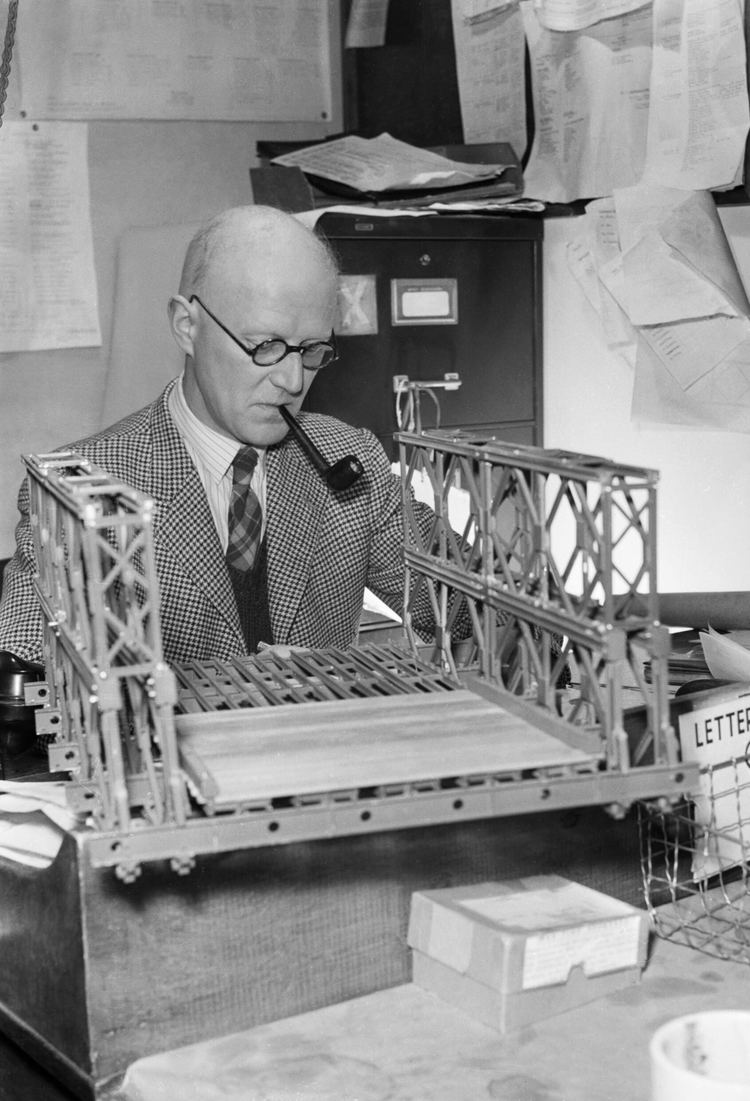Nationality English Role Civil engineer | Name Donald Bailey Occupation Civil Engineer | |
 | ||
Education University of Sheffield, Thomas Rotherham College | ||
Sir Donald Coleman Bailey, OBE (15 September 1901 – 5 May 1985) was an English civil engineer who invented the Bailey bridge. Field Marshal Montgomery is recorded as saying that "without the Bailey bridge, we should not have won the war."
Contents
Background
Bailey attended Rotherham Grammar School and The Leys School in Cambridge. He pursued a BEng degree from University of Sheffield and graduated in 1923.
Bailey was a civil servant in the War Office when he designed his bridge. Another engineer, A. M. Hamilton, successfully demonstrated that the Bailey bridge breached a patent on the Callender-Hamilton bridge, though the Bailey bridge was generally regarded as being superior for temporary use.
Bailey was knighted in 1946 for his bridge design. By this time he was living quietly in Southbourne in Bournemouth. Dorothy Barnes, one of the girls at the Southbourne Crossroads bank, which he used regularly was surprised to learn that her unassuming customer had been knighted. He died in Bournemouth in 1985. There is, as yet, no blue plaque in Bournemouth to commemorate him. His 1940s home was demolished c 2004 and replaced by flats, although he also had other addresses in Bournemouth, being recorded in 1974 at 14 Viking Close, as Bailey, Sir Donald C. OBE, JP. The house in which Bailey was born, 24 Albany Street, Rotherham is still standing.
During the Second World War, there was a factory making the components for the Bailey Bridge in the neighbouring town of Christchurch, where a section of bridge still remains, at a retail park in Barrack Road. The components were shipped to training grounds in Cumbria, where men learned the difficult technique of assembling them in rivers at night, to simulate combat conditions.
Field Marshal Bernard Montgomery wrote in 1947:
Bailey Bridging made an immense contribution towards ending World War II. As far as my own operations were concerned, with the Eighth Army in Italy and with the 21 Army Group in North West Europe, I could never have maintained the speed and tempo of forward movement without large supplies of Bailey Bridging.
